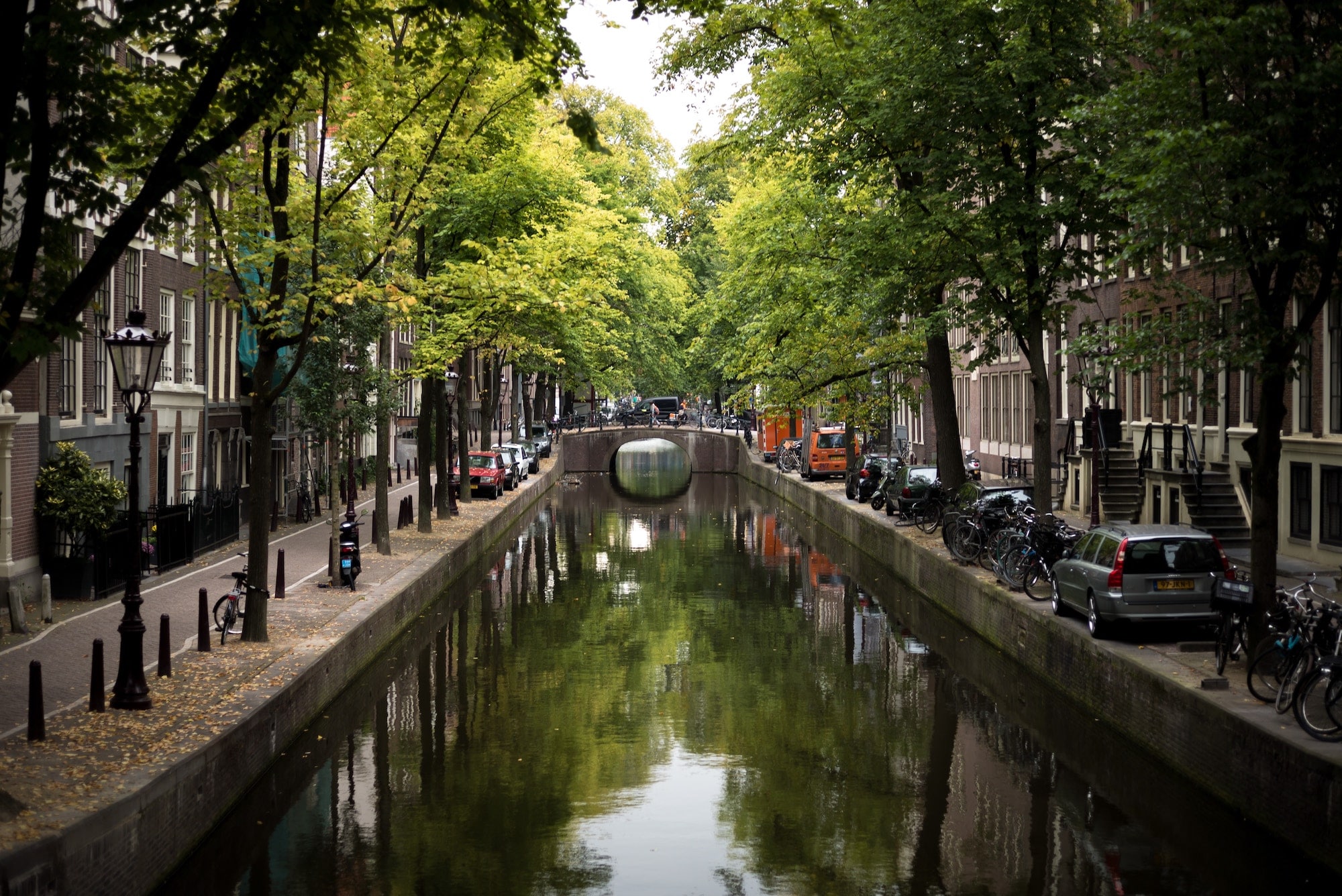In 2015, the United Nations Member States adopted The 2030 Agenda for Sustainable Development: a shared blueprint towards peace and prosperity for people and the planet. End poverty, improve human lives, and protect the environment: that’s largely what the 17 Sustainable Development Goals (SDGs) strive to achieve by 2030.
But it’s 2023 and we’re far from eradicating poverty. Current projections place the global poverty rate at 7 per cent (around 600 million people) in 2030. Meanwhile, on the environmental front, researchers are forecasting a 66% chance that we’ll exceed the 1.5C global warming threshold between now and 2027.
We need to do better.
A Different Mindset for the 21st Century
What we sorely need is a different mindset that’s more suited to our 21st-century problems.
An alternative economic system for a future that meets every person’s basic needs while safeguarding the living world on which we all depend. A system that makes us thrive, whether or not there’s economic growth.
That’s the vision underpinning Doughnut Economics, conceived by Kate Raworth. Some say it’s nothing more than an idealistic notion. But many others have started implementing the Doughnut’s principles to transform their businesses and communities.
It might seem like pie in the sky, but the same could be said for airplanes, self-driving cars, and female Prime Ministers. As the great Nelson Mandela said, “It always seems impossible until it’s done.”
Circular business models are a fundamental step forward in sustainability efforts. But if unlimited growth remains the primary business goal, we will still be contributing to over-consumption, which is a root cause of our climate crisis.
Doughnut Economics offers an inclusive, balanced approach to creating a regenerative and distributive economy for all of us—people, businesses, countries, planet—to prosper, rather than just grow.
It’s about the circle of life. If local communities prosper and the ecosystem is healthy, businesses will naturally do well, and the economy will likewise grow—in the long run. This is the theory anyway. And if nature is anything to go by, the Doughnut could be the ideal guide to achieving equitable and equal success, provided we all work together.
Pushing Beyond Circular Limits
Circularity shares a number of common principles with the Doughnut, mainly in its focus on transforming our throwaway economy into one that eliminates waste and pollution, circulates resources, and regenerates nature.
However, The Ellen MacArthur Foundation cautions that discussions about the circular economy can often be rather narrow, when focusing solely on practical elements such as closed loops, product service systems, business models, etc. A more holistic view is needed. One that includes “the science and philosophy that shapes how we think and act, as well as legislation and infrastructural elements”, without which we run a real risk of ‘business as usual’ with a few green tweaks.
This is where Doughnut Economics’ inclusive approach takes circularity further. It advocates for an economy that ensures social justice and ecological safety, regardless of whether GDP is going up, down, or holding steady.

In Chapter 1 of her book, Doughnut Economics: Seven Ways to Think Like a 21st-Century Economist, Kate Raworth argues:
“For over 60 years, economic thinking told us that GDP growth was a good enough proxy for progress, and that it looked like an ever-rising line. But this century calls for quite a different shape and direction of progress.”
Perhaps it’s time for us to raise the bar and push beyond the limits of growth-driven economies and pure circularity, to create a future where humanity and nature are in harmony with one another.
The Sweet Spot: What is Regenerative Prosperity?
Let’s go back to the Doughnut to take a closer look at the sweet spot.

Described as a 21st-century compass for human prosperity, the Doughnut consists of two concentric rings:
- An inner ring symbolising the minimum social foundation necessary to ensure that no one is deprived of life’s essentials, and
- An outer ring that represents an ecological ceiling preventing us from collectively overshooting the planetary boundaries, protecting Earth’s life-supporting systems.
In the middle lies a doughnut – the sweet spot where humanity can live in an ecologically safe and socially just space.
In her book, Kate Raworth shares seven ways to think like a 21st-century economist. It’s a framework inspired by diverse schools of economic thought including ecological, feminist, institutional, behavioural and complexity economics.

Idealistic or Insightful?
Critics of Doughnut Economics have found fault with its utopian claims and failure to provide a clear actionable solution. To be sceptical of its feasibility is an understandable response. It does sound a little starry-eyed, even in these times where everybody wants to save the world.
But it’s important to stress that Raworth isn’t against growth. She acknowledges in her book that significant GDP growth is very much needed for low- and middle-income countries to get above the doughnut’s social foundation. The point is to use economic growth as a means to work towards social goals within the earth’s boundaries, rather than making it an indicator of success in itself, which is an oversight with our current system.
Raworth isn’t the first to sound the alarm on our obsession with growth.
Visionary systems thinker Donella Meadows—one of the lead authors of the 1972 book, Limits to Growth—boldly declared that “Growth is one of the stupidest purposes ever invented by any culture, we’ve got to have an enough.” The book was widely criticised as doomsday fantasy due to its premise that given earth’s finite resources, the quest for unlimited growth in population, material goods, etc., would eventually cause civilisation’s collapse.
40 years later, truth isn’t so far from fiction. New research by the University of Melbourne finds some of the book’s forecasts to be eerily accurate. The findings indicate that if we stay on the book’s “business-as-usual” trajectory (which we’ve been doing so far), we can expect to start seeing the early stages of global collapse soon.
As melodramatic as that seems, the logic is sound. If we continue to overburden our ecosystem, there’s only one possible outcome. Knowing this, Doughnut Economics could be interpreted as an insightful approach to a looming problem. It doesn’t offer a clear set of policies or solutions to our social and ecological problems, but it proposes an alternative mindset befitting our times. Raworth’s opinion is that the solutions lie not in a fixed formula, given the complexity of our world, but in a dynamic balance of priorities.
How Your Sustainable Business Can Hit the Sweet Spot & Thrive, Not Just Grow
Now that you understand the theory behind Doughnut Economics, how can your sustainable business can get in on the Doughnut action?
The key to creating a regenerative and distributive enterprise lies in its ‘deep design’, defined as:
- The purpose of the business
- How it operates in networks
- How it is governed
- How it is owned, and
- The nature of its relationship with finance

The Doughnut changes the organisation’s focus from value extraction to benefit generation. These five layers of deep design, inspired by Marjorie Kelly—a leading theorist in next-generation enterprise design—can powerfully shape an organisation’s capabilities and contributions to the world.
Patagonia Makes Earth Their Only Shareholder
Take for example Patagonia’s recent business redesign, which was announced last September 2022.

In a radical move, the company’s owners transferred all controlling shares to the Patagonia Purpose Trust, which exists to protect the company’s values. These shares hold all voting rights without any dividend rights. Patagonia’s profits will be channelled to the Holdfast Collective “to protect nature and biodiversity, support thriving communities and fight the environmental crisis”.
This fundamentally transforms Patagonia’s governance, ownership, and financial parameters, bringing them in line with its stated purpose to “save our home planet”. Under this new direction, we can expect to see even more transformative ideas in their product design, supply chain management, production, and marketing.
Yvon Chouinard, Patagonia founder, former owner, and current board member proclaims:
“Instead of extracting value from nature and transforming it into wealth, we are using the wealth Patagonia creates to protect the source. We’re making Earth our only shareholder. I am dead serious about saving this planet.”
Breedweer: An Impact-First Provider of Facility Cleaning Services

Another prime example of a regenerative and distributive enterprise, cited in the Doughnut & Enterprise Design paper, is Breedweer: a Dutch facility service provider with social impact as its core purpose and goal.
Driven to achieve the UN SDGs, Breedweer is one of the 10% most social companies in the Netherlands. Associating sustainability with creating social returns, the company shows that the proof is indeed in the doughnut pudding!
Besides proactively employing people from vulnerable target groups, they follow through with training and development at the Breedweer Academy. The company’s dividend cap and reinvestment policy guarantees that 50% of profits finance activities supporting their social mission, allowing the business to create continuous and lasting impact.
The Emergence of Doughnut Economic Cities

Criticisms aside, Doughnut Economics is being adopted in major cities including Amsterdam, Copenhagen, Brussels, Dunedin, and more.
In Amsterdam, the goal is to bring their 872,000 residents inside the Doughnut to ensure a good quality of life for all, within acceptable ecological boundaries. In collaboration with Raworth’s Doughnut Economics Action Lab (DEAL), the city is introducing massive infrastructure projects, employment schemes, and new policies for government contracts to realise that vision.
Being a new and experimental concept, it’s hard to tell how effective Doughnut Economics will be in addressing our social and ecological problems. On its own, probably not much. But combined with other tools, it could prove a useful compass for a world of individual nations.
All the same, it’s encouraging to see that businesses and cities all over are stepping up to the challenge. At the end of the day, we need to start somewhere.
What say you?



Leave a Reply